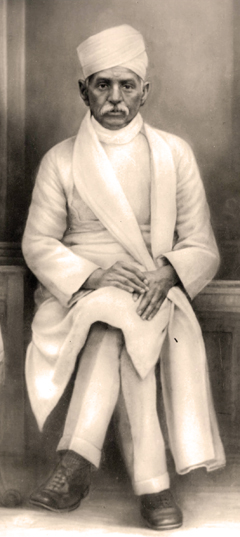CONTENTS
- Malaviya Mission
- Battery Energy Storage Systems (BESS) scheme
Malaviya Mission
Context:
The Union Minister for Education and Skill Development & Entrepreneurship recently launched the Malaviya Mission – Teachers Training Programme by the University Grants Commission at Kaushal Bhawan, New Delhi.
Relevance:
GS II: Government Policies and Interevntions
Dimensions of the Article:
- About Malaviya Mission
- About Pt. Madan Mohan Malaviya
About Malaviya Mission:
- Objective: The Malaviya Mission aims to provide tailored training programs for teachers, primarily focusing on faculty members in higher educational institutions (HEIs).
- Capacity Building: The program’s primary goal is to enhance the capacity and skills of teachers. It aims to achieve this by providing continuous professional development opportunities.
- Scope: The mission seeks to build the capacities of approximately 15 lakh teachers in HEIs. This capacity building effort will be carried out through 111 Malaviya Mission centers located across India.
- Quality Enhancement: One of the key objectives is to improve the quality of teacher training. The mission intends to accomplish this by enhancing leadership skills among teachers, aligning training with the goals of the National Education Policy (NEP), and incorporating the Indian Knowledge System into the program modules.
- Career Progression: To facilitate career growth for educators, the capacity building programs under the Malaviya Mission will be mapped to the credit framework.
- Revamped HRD Centers: As part of this initiative, the existing Human Resource Development Centers will be revamped and renamed as Madan Mohan Malaviya Teachers Training Centers.
About Pt. Madan Mohan Malaviya

- Birth: Madan Mohan Malviya was born on 25th December 1861 in Allahabad (now Prayagraj), Uttar Pradesh.
- Role in Independence Struggle: He played a significant role in the Indian independence struggle against British rule.
- Founder of BHU: Malviya founded the Banaras Hindu University (BHU) in 1916, one of the prominent educational institutions in India.
- Ending Indenture System: He contributed to ending the Indian indenture system, particularly in the Caribbean. Indentured labor was a bonded labor system introduced after the abolition of slavery, where laborers were recruited to work on plantations and construction projects in British colonies.
- Satyamev Jayate: Malviya popularized the term ‘Satyamev Jayate,’ which is now India’s national motto. The phrase originally comes from the Mundaka Upanishad.
- Titles: He was given the title of ‘Mahamana’ by Rabindranath Tagore and was recognized as a ‘Karmayogi’ by Dr. S. Radhakrishnan, India’s second President.
- Devnagri in Courts: Malviya’s efforts led to the introduction of Devnagri script in British-Indian courts, which is considered one of his significant achievements.
- Expulsion from Brahmin Community: He was expelled from the Brahmin community for his views on caste discrimination and Brahmanical patriarchy.
- Hindu-Muslim Unity: Malviya worked tirelessly for Hindu-Muslim unity and delivered famous speeches on communal harmony.
- Hindu Mahasabha: He helped establish the Hindu Mahasabha in 1906, bringing together various local Hindu nationalist movements.
- Newspapers: Malviya founded several newspapers, including the Hindi-language weekly Abhyudaya (1907), the English-language daily the Leader of Allahabad (1909), and the Hindi monthly the Maryada (1910). He also chaired the board of Hindustan Times and facilitated the launch of its Hindi edition.
- Death: He passed away on 12th November 1946, at the age of 84.
- Bharat Ratna: In 2014, he was posthumously conferred with Bharat Ratna, India’s highest civilian award.
Poona Pact (1932):
- The Poona Pact was signed in 1932, with B.R. Ambedkar representing the depressed classes and Madan Mohan Malviya representing the upper-caste Hindus.
- It was aimed at ending Mahatma Gandhi’s fast in protest against the MacDonald communal award.
- The pact led to an agreement on reserved seats for the depressed classes in provincial legislatures, but it was a significant moment in India’s social and political history.
Battery Energy Storage Systems (BESS) scheme
Context:
Recently, the Union Cabinet, chaired by the Hon’ble Prime Minister of India, approved the Scheme for Viability Gap Funding (VGF) for the development of Battery Energy Storage Systems (BESS).
Relevance:
GS III: Indian Economy
Dimensions of the Article:
- Battery storage
- About Battery Energy Storage Systems (BESS)
Battery storage
- Battery storage, also known as battery energy storage systems (BESS), refers to devices designed to capture and store energy, typically generated from renewable sources such as solar and wind.
- This stored energy can be released and utilized when there is a demand for power, helping to balance energy supply and demand more efficiently.
About Battery Energy Storage Systems (BESS):
- Development Goals: The approved scheme targets the development of 4,000 MWh of Battery Energy Storage Systems (BESS) projects by the year 2030-31.
- Funding: The government provides financial support for BESS projects, offering up to 40% of the capital cost in the form of Viability Gap Funding (VGF). This funding will be disbursed in five tranches linked to different project implementation stages.
- Levelized Cost of Storage (LCoS): The scheme aims to achieve a Levelized Cost of Storage (LCoS) ranging from Rs. 5.50-6.60 per kilowatt-hour (kWh) through VGF support. This cost-effectiveness makes stored renewable energy a viable option for managing peak power demand nationwide.
- Distribution Companies (Discoms): To ensure consumer benefits, a minimum of 85% of BESS project capacity will be made available to Distribution Companies (Discoms).
- Selection Process: The selection of BESS developers for VGF grants will be conducted through a transparent and competitive bidding process. This approach promotes fairness for both public and private sector entities.
- Significance: The scheme has several significant advantages:
- Enhancing the integration of renewable energy into the electricity grid.
- Minimizing energy wastage while optimizing transmission network utilization.
- Reducing the need for expensive infrastructure upgrades.
- Encouraging competition and fostering a robust ecosystem for BESS, attracting investments and generating opportunities for associated industries.
- Supporting clean, reliable, and affordable electricity for citizens by harnessing the potential of renewable energy sources like solar and wind power.





